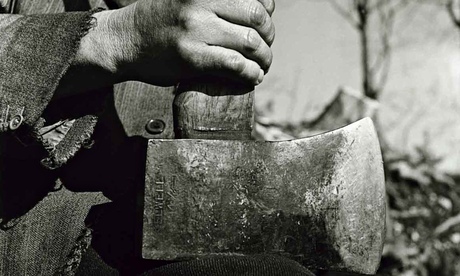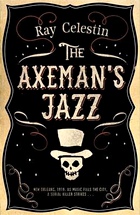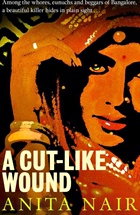The Axeman's Jazz by Ray Celestin, A Cut-Like Wound by Anita Nair, The Killer Next Door by Alex Marwood, The Fever by Megan Abbott, The Hidden Girl by Louise Millar

Death in the deep south … The Axeman’s Jazz explores 12 real-life murders that took place in New Orleans between 1918 and 1919. Photograph: Jane Bown
 Inspired by the serial killer thought to have been responsible for 12 murders in New Orleans between 1918 and 1919, Ray Celestin's first novel, The Axeman's Jazz (Mantle, £16.99), initially stays close to the known facts and includes a letter, published in the newspapers at the time, which was supposedly sent by the original Axeman. The writer, who, like the author of the famous 1888 "Jack the Ripper" letter, gives his address as "Hell", promises to claim his next victim at a specific date and time but says that he will spare those "in whose home a jazz band is in full swing". As with the Ripper, the real killer's identity remains unknown, and Celestin has three characters struggling to work out who he or she might be. Detective lieutenant Michael Talbot heads the official investigation; his former partner, Luca d'Andrea, recently freed from prison for corruption, is tasked by the mafia to discover whodunnit; and 19-year-old Sherlock Holmes fan Ida Davis, a secretary for the Pinkerton Detective Agency, decides to branch out on her own.
Inspired by the serial killer thought to have been responsible for 12 murders in New Orleans between 1918 and 1919, Ray Celestin's first novel, The Axeman's Jazz (Mantle, £16.99), initially stays close to the known facts and includes a letter, published in the newspapers at the time, which was supposedly sent by the original Axeman. The writer, who, like the author of the famous 1888 "Jack the Ripper" letter, gives his address as "Hell", promises to claim his next victim at a specific date and time but says that he will spare those "in whose home a jazz band is in full swing". As with the Ripper, the real killer's identity remains unknown, and Celestin has three characters struggling to work out who he or she might be. Detective lieutenant Michael Talbot heads the official investigation; his former partner, Luca d'Andrea, recently freed from prison for corruption, is tasked by the mafia to discover whodunnit; and 19-year-old Sherlock Holmes fan Ida Davis, a secretary for the Pinkerton Detective Agency, decides to branch out on her own. Although it smacks a little of the tourist guide in places, The Axeman's Jazz manages, nevertheless, to be both a fascinating portrait of a vibrant and volatile city and a riveting read.
 Bangalore, the Silicon Valley of India and its third most populous city, is the setting for novelist Anita Nair's first foray into crime fiction, A Cut-Like Wound (Bitter Lemon Press, £8.99). The plot – a young man who fantasies about being a hijra and commits murder in drag, pursued by a jaded inspector whose discovery of corruption in influential families put the kibosh on his career – is standard fare. However, Nair captures the seedy side of shiny new India vividly, and Inspector Gowda – with his weary self-knowledge; his secret, wistfully aspirational biker tattoo; his stagnating marriage and his confusion when an old flame re-enters his life – is a welcome addition to the ranks of flawed-but-lovable fictional cops.
Bangalore, the Silicon Valley of India and its third most populous city, is the setting for novelist Anita Nair's first foray into crime fiction, A Cut-Like Wound (Bitter Lemon Press, £8.99). The plot – a young man who fantasies about being a hijra and commits murder in drag, pursued by a jaded inspector whose discovery of corruption in influential families put the kibosh on his career – is standard fare. However, Nair captures the seedy side of shiny new India vividly, and Inspector Gowda – with his weary self-knowledge; his secret, wistfully aspirational biker tattoo; his stagnating marriage and his confusion when an old flame re-enters his life – is a welcome addition to the ranks of flawed-but-lovable fictional cops.More
No comments:
Post a Comment